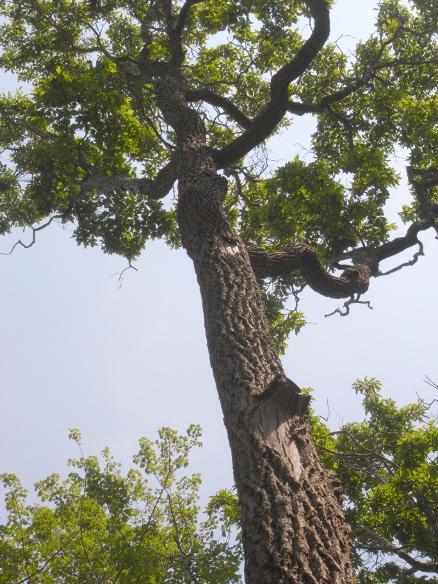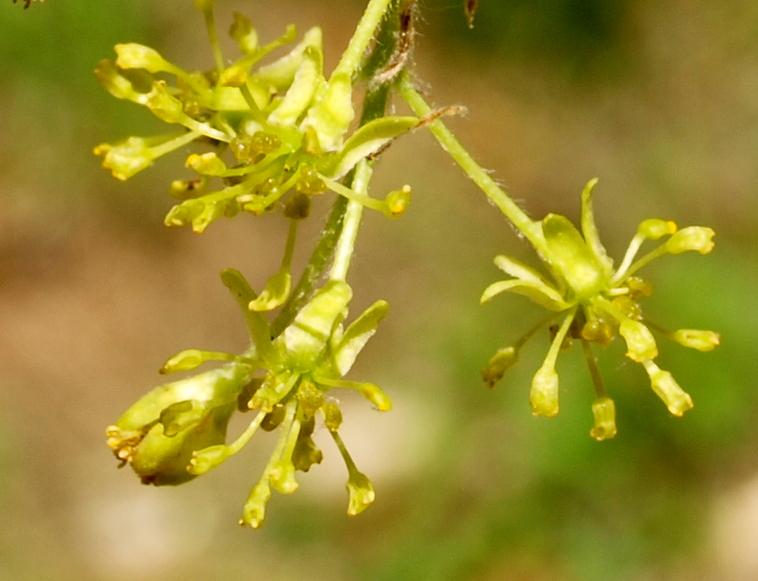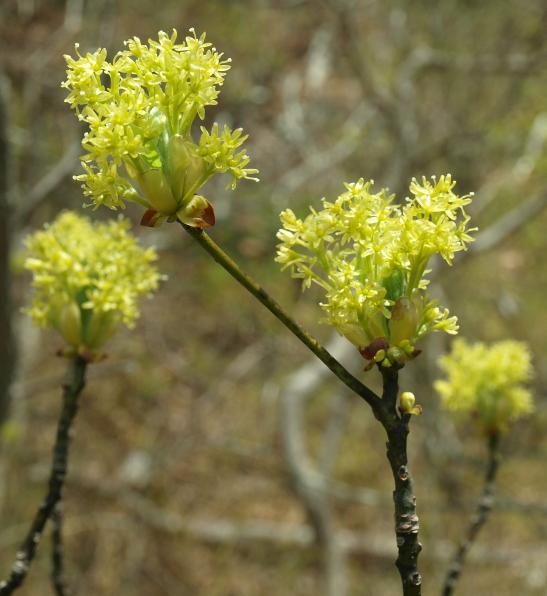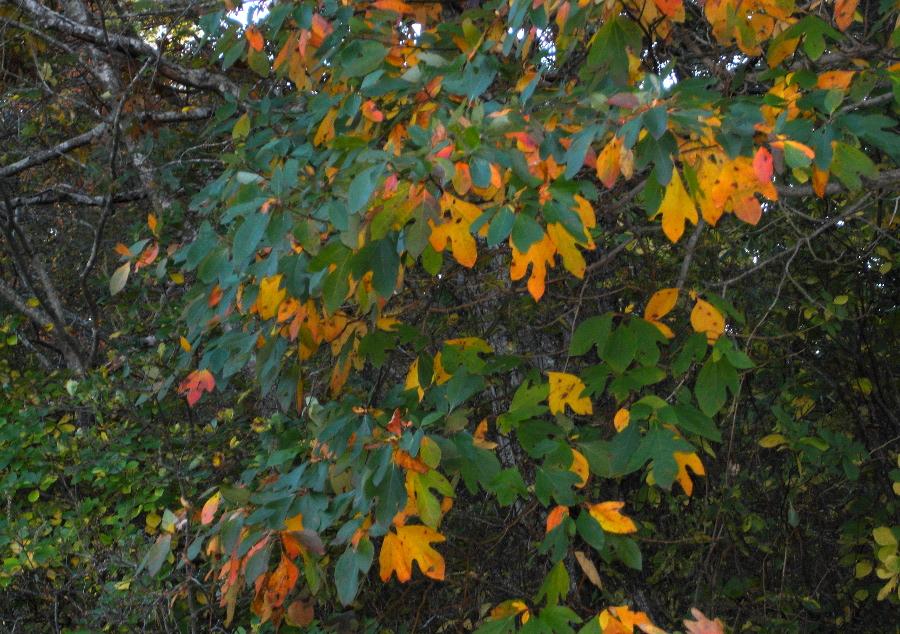Sassafras
Sassafras albidum
In Massachusetts, this tree of laurel family is at the northern extent of its range, so it never reaches the height and trunk
diameter it attains down south. It is easy to recognize by its often crooked trunks and limbs, characteristically furrowed
mature bark, and smooth green bark on young branches and stems. The aromatic leaves are variable on the same tree: unlobed
(elliptic), 3-lobed, or else 2-lobed (mitten-shaped), turning bright yellow, red, or orange in the fall. Sassafras produces
flowers of two types, staminate and pistillate, on different trees. The long-stalked small fruits are colored deep blue. They
are consumed by birds and small mammals. Sassafras is capable of producing aggressive, dense colonies from root suckers, especially
when it is disturbed.

An old sassafras, Savery Pond area, Plymouth, June 22

Root suckers often form groves. Tidmarsh Sanctuary, Plymouth, April 18

Staminate flowers, each with nine stamens. Rocky Gutter WMA, Middleborough, May 17

Ellisville Harbor State Park, Plymouth, May 10

Tidmarsh Sanctuary, Plymouth, October 15